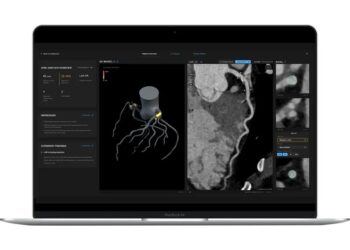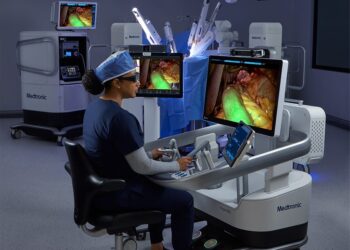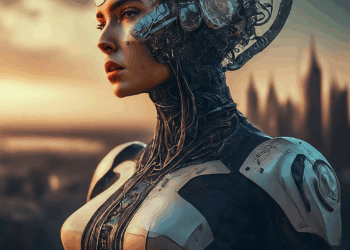# Beyond the Black Box: Deconstructing the Modern AI Stack
When we talk about “AI,” it’s often in monolithic terms—a single, mysterious entity, a “black box” that produces intelligent results. While this is a convenient shorthand, for those of us building, deploying, and investing in this technology, it’s a dangerously incomplete picture. The reality is that modern AI is not one thing; it is a layered, interdependent technology stack.
Understanding this stack is more than an academic exercise. It’s the key to making strategic decisions, identifying real innovation, and appreciating where the true challenges and opportunities lie. Let’s peel back the layers.
—
### The Main Analysis: A Five-Layer Model
At its core, the AI stack can be broken down into five distinct but interconnected layers, moving from the physical world of silicon up to the digital experience of the end-user.
#### Layer 1: The Foundation – Silicon and Hardware
Everything in AI starts with computation, and that computation runs on specialized hardware. This is the bedrock of the entire stack. For years, **NVIDIA’s GPUs (Graphics Processing Units)** have been the undisputed workhorses for training complex neural networks, thanks to their parallel processing capabilities. However, the landscape is diversifying. We now see a hardware arms race, with **Google’s TPUs (Tensor Processing Units)**, custom **ASICs (Application-Specific Integrated Circuits)** from hyperscalers, and a new wave of startups all designing chips specifically optimized for AI workloads.
A bottleneck at this layer—like the recent GPU shortages—sends shockwaves up the entire stack, impacting everything from model training costs to API availability. This is the physical constraint on the digital world of AI.
#### Layer 2: The Workshop – Frameworks and Libraries
Sitting on top of the hardware are the software frameworks that allow developers to build and train models without writing low-level C++ or CUDA code. This is the domain of open-source giants like **Google’s TensorFlow** and **Meta’s PyTorch**.
These frameworks provide the fundamental building blocks: tensor operations, automatic differentiation, and neural network layers. They abstract away the complexity of the underlying hardware, creating a common language for researchers and engineers. The dominance of PyTorch in the research community, for instance, has had a profound impact on how quickly new model architectures are developed and shared.
#### Layer 3: The Engine – Pre-trained and Foundation Models
This is the layer that has captured the public’s imagination. It’s home to the massive, pre-trained **Foundation Models** like OpenAI’s GPT-4, Google’s Gemini, Anthropic’s Claude, and open-source alternatives like Llama 3. These models are the “engines” of generative AI.
Trained on vast datasets at an immense cost (a direct dependency on Layers 1 and 2), they develop a general-purpose understanding of language, images, or code. The key innovation here is that a single foundation model can be adapted for thousands of specific tasks through fine-tuning or prompt engineering, democratizing access to capabilities that were once siloed in specialized models.
#### Layer 4: The Delivery Service – MLOps Platforms and APIs
A powerful model is useless if it can’t be accessed reliably and at scale. This layer is all about deployment, management, and accessibility. It’s the bridge from model-as-an-artifact to model-as-a-service.
This includes:
* **APIs:** Companies like OpenAI and Anthropic provide direct API access to their foundation models, allowing developers to integrate state-of-the-art AI with minimal infrastructure overhead.
* **MLOps Platforms:** Services like **Hugging Face Hub**, **AWS SageMaker**, **Azure AI**, and **Google’s Vertex AI** provide comprehensive tools for hosting, fine-tuning, monitoring, and managing the entire lifecycle of a model. This “Machine Learning Operations” layer is critical for building robust, production-grade AI systems.
#### Layer 5: The Experience – The Application Layer
Finally, we arrive at the top of the stack: the user-facing application. This is where the abstract power of the lower layers is translated into tangible value. Think of **GitHub Copilot** integrating a code-generation model into a developer’s IDE, **Midjourney** providing a Discord-based interface for an image diffusion model, or **ChatGPT** itself as a productized interface for an LLM.
Innovation here is less about the model architecture and more about user experience, product design, and solving a specific user problem. A brilliant application can succeed with a good-enough model, while the world’s best model will fail without a compelling application.
—
### Conclusion: From Monolith to Ecosystem
Viewing AI as a stack transforms our understanding from a single “black box” into a vibrant, competitive ecosystem. It reveals that innovation is happening at every level, from chip design to UI design.
This layered perspective provides clarity. It helps explain why a hardware company like NVIDIA can be one of the most valuable AI players without building a single consumer-facing app. It clarifies the difference between building a foundation model (an enormous, capital-intensive undertaking at Layer 3) and building a novel AI application (a challenging but more accessible task at Layer 5).
As you navigate the AI landscape, don’t just ask “What does this AI do?” Instead, ask “Where does it sit in the stack?” The answer will tell you far more about its technology, its business model, and its place in the future of artificial intelligence.
This post is based on the original article at https://www.therobotreport.com/torc-collaborates-with-edge-case-to-commercialize-autonomous-long-haul-trucks/.






















